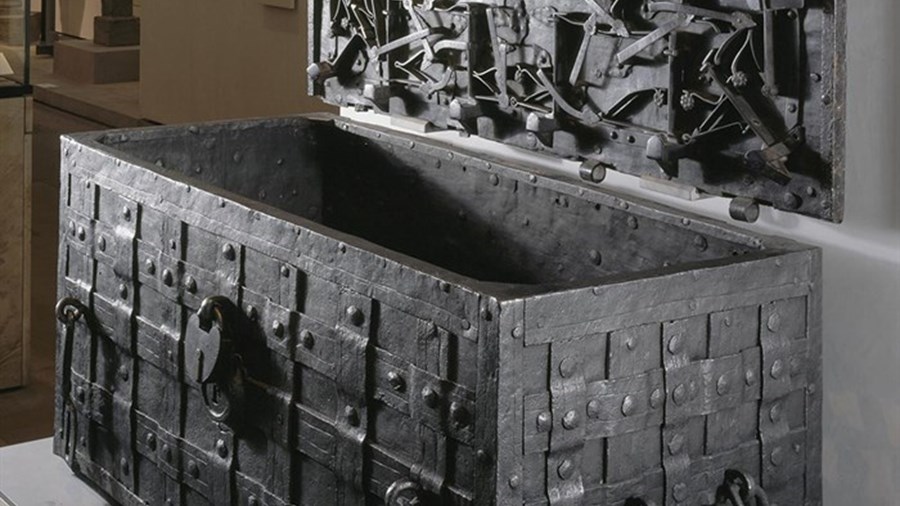Key in a search term below to search our website.
Key in a search term below to search our website.
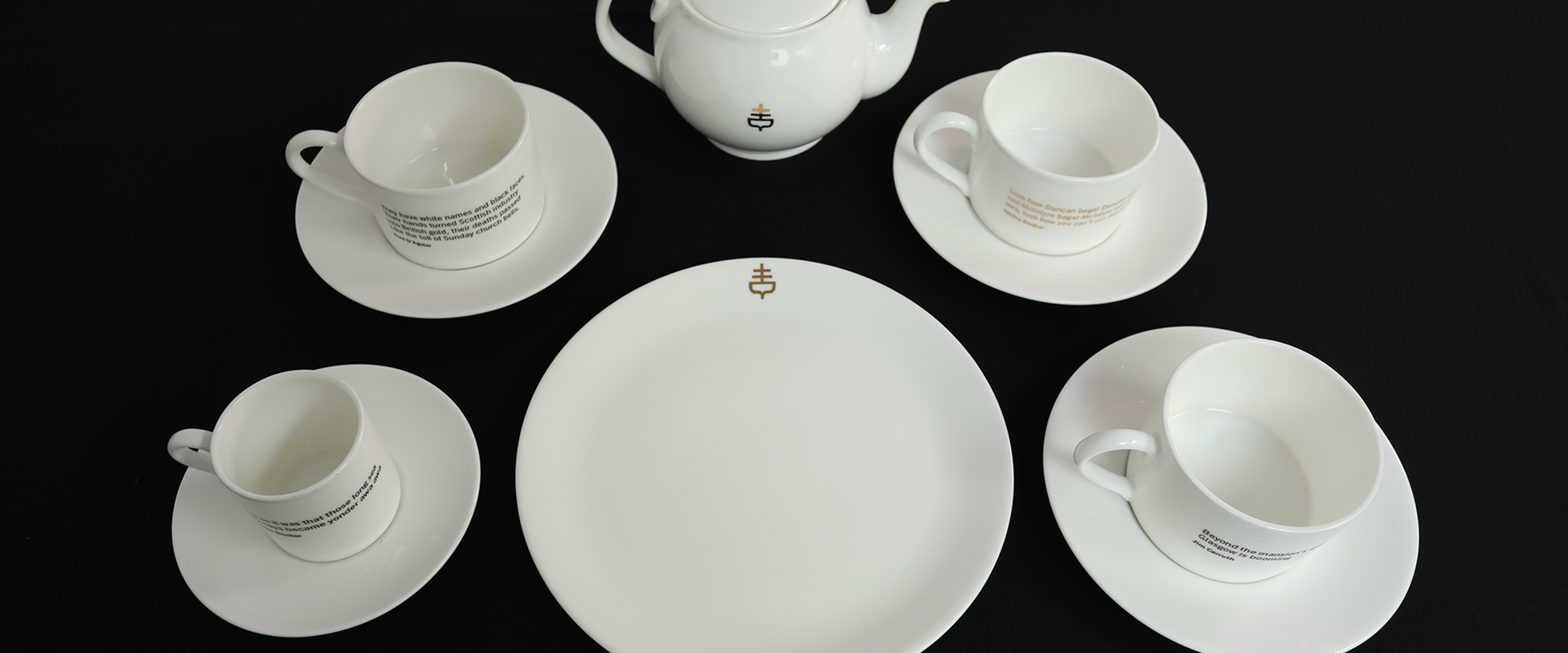
Crockery from the Empire Café, Glasgow 2014 Commonwealth Games cultural venue, featuring poetry about Scotland's slavery history.
© National Museums Scotland
Crockery from the Empire Café, Glasgow 2014 Commonwealth Games cultural venue, featuring poetry about Scotland's slavery history.
© National Museums Scotland
The development of the collection began in the 18th century and many of the objects collected over the following 200 years reflect imperial and colonial histories, including ones associated with the transatlantic slave trade.
This is true for all our collections - including natural sciences, Scottish history and archaeology, art and design and science and technology, as well as ancient and living cultures from around the world.
Such objects were collected for many different reasons - for example, as works of art, as material evidence of the past, as scientific discoveries, as curios and personal mementoes, as representations of other cultures, as specimens of natural resources for industrial exploitation, as well as trophies or loot taken during colonial military campaigns.
These collections reflect the experiences, motivations, and interactions of many different people and cultures. Their stories are complex, dynamic and many-sided but often they involved exploitation, oppression and violence, particularly against indigenous peoples.
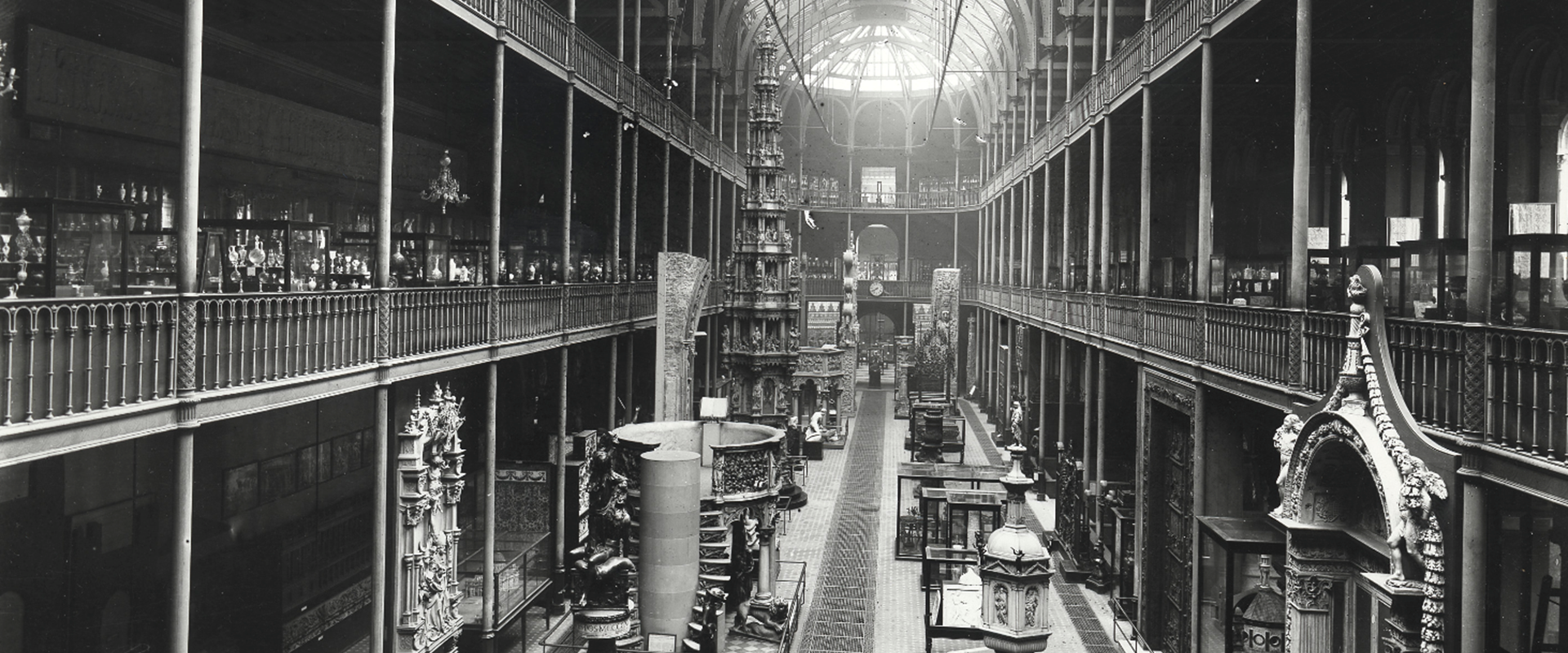
Grand Gallery, National Museum of Scotland c.1880-1902.
In understanding the origins of our collections, the difficult histories they expose and the complex questions they raise, we are committed to revealing and sharing the full range of stories about imperial and colonial activities associated with our collections.
Like many museums, important aspects of our collections and the way that we display them have been shaped by imperial and colonial thinking and actions that were based on racial and racist understandings of the world.
In response, we are reflecting on how we represent imperial and colonial pasts to our audiences. In our galleries, we are making changes to displays and labels to address historical bias. Behind the scenes, we are researching the collections to ensure that our interpretation of these histories and their legacies is based in rigorous and up-to-date knowledge.
In undertaking this work, we will consult and collaborate with those communities for whom our objects have special relevance.
We recognise that there is a lot more work to do.
Audiences and communities have a vital role to play as we move this conversation forward, and we are committed to building relationships and being open, transparent and inclusive.
We welcome your feedback. If you would like to share your views, please email us at input@nms.ac.uk.
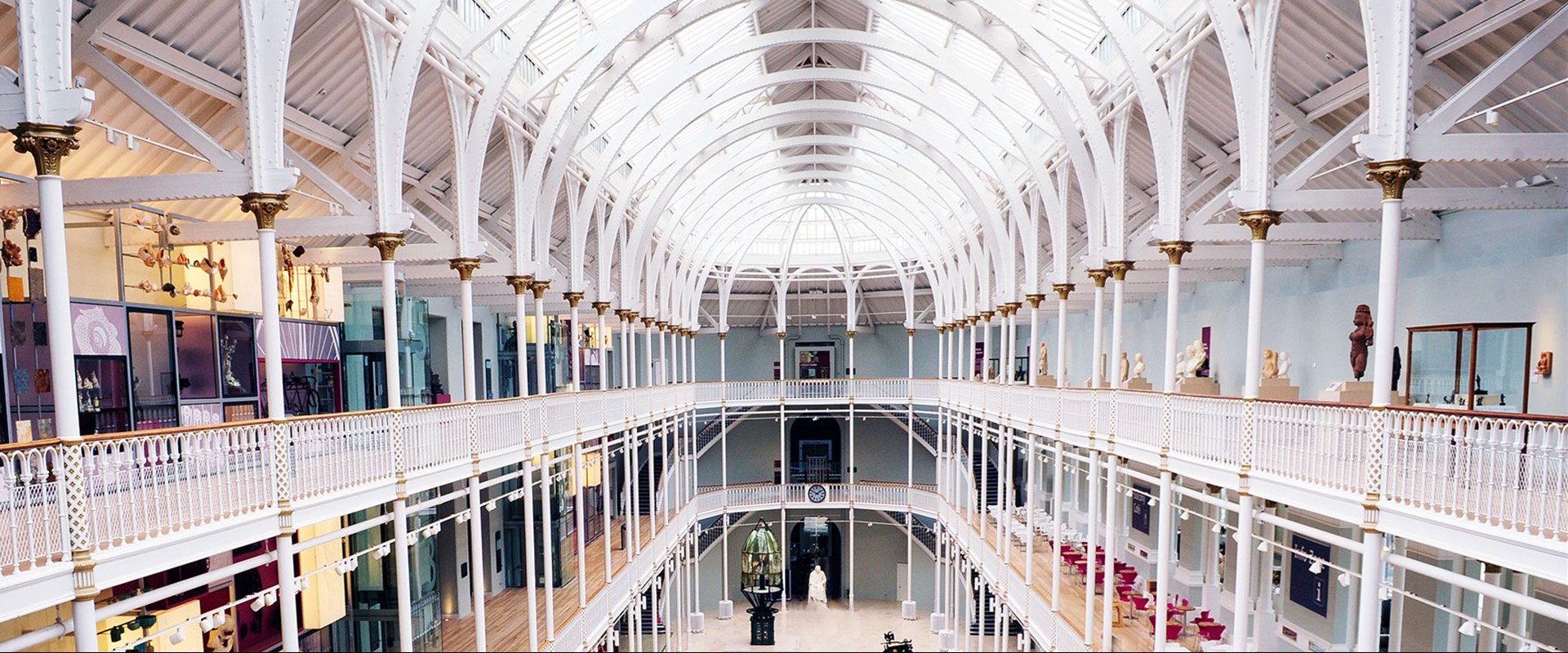
Grand Gallery, National Museum of Scotland c.2015
Many objects entered our collection through Scotland's role in the British Empire.
For more than 200 years, Scotland's economy was closely tied to imperial trade and conquest. Scottish people were participants in and drivers of the Empire, both at home and overseas as politicians, businesspeople, traders, settlers, colonial administrators, soldiers, missionaries and forced migrants. Strong links remain between Scotland and its international diaspora.
Today, we are learning more about other sides of the story, including the impact of imperial and colonial actions on societies in Africa, Asia, Oceania and the Americas, legacies of which are still felt and can be seen today.
Until recently, it was more common for museums, including our own, to tell stories about Empire through objects reflecting the lives and achievements of Scottish people. Little was said about their role in the exploitation of other peoples, including in the enslavement of Africans in Africa, their brutal transportation, and their forced labour on Scottish-owned plantations in the Caribbean.
It is also not well-known that Scottish interests in colonial expansion pre-dated the formation of Great Britain as a single state. During the early 17th century, Scottish settlement and trading schemes were attempted in Ireland and Canada. Nova Scotia, or ‘New Scotland’ in Latin, was a short-lived scheme in the territory of the Mi'kmaq people, today part of Canada.
In the late 1690s, the Scottish settlement at Darien, in modern day Panama, was a failed attempt to break into the transatlantic slave trade. The venture was a financial disaster and contributed toward Scotland and England forming the United Kingdom in 1707.
With unlimited access to a growing empire, Scotland’s commerce was an integral part of the British colonial economy by the late 18th century and included the trade in and ownership of enslaved people.
We are expanding our research into these challenging histories, often in collaboration with external partners, and are seeking to grow the collection with more objects that tell these stories, for example by working with contemporary artists from descendent communities.
Our aim is to share these stories with and learn from all our audiences in Scotland and around the world.
If you would like to share your views, please email us at input@nms.ac.uk
Email usWe continue to undertake work to better understand the imperial and colonial histories and legacies associated with our collections, their importance for contemporary communities, and to share this information with our audiences.
The Memorial Pole has been returned to its place of origin in what is now British Columbia, Canada.
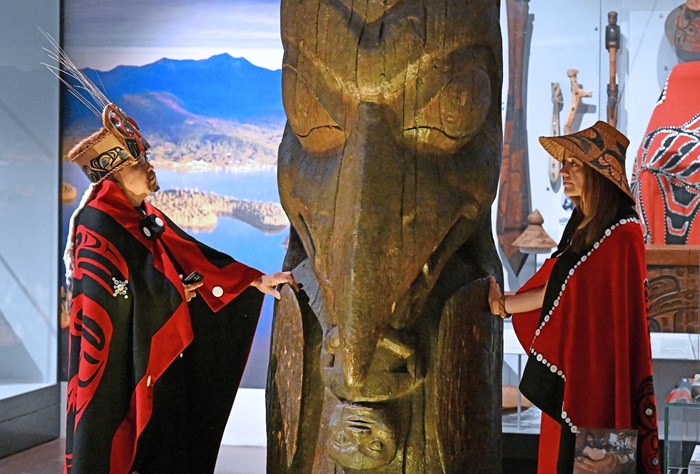
Sim'oogit Ni'isjoohl (Mr Earl Stephens) and Sigidimnak’ Nox Ts'aawit (Dr Amy Parent) of Nisga'a Nation with the memorial pole.
During a visit from a delegation of Nisga’a representatives to Edinburgh in August 2022, a request for its transfer to the Nisga'a Nation was made. The request was evaluated in line with our Procedure for Considering Requests for the Permanent Transfer of Collection Objects from Non-UK Claimants. It was agreed by the Board of Trustees of National Museums Scotland in November 2022 and subsequently approved by the Cabinet Secretary for the Constitution, External Affairs and Culture.
The Pole was carved from red cedar in 1855 by artist Oyea Tait and his assistant carver, Gwanes, in memorial of Ts’aawit, a Nisga'a chief of British Columbia, Canada. It shows a series of interlocking figures relating to Ts’aawit's family history through his ancestors, family crests, and his clan. The pole originally stood in front of the house of Ts’aawit's relatives in Ank’idaa village on the Nass River. In 1929, Marius Barbeau acquired the pole on behalf of the Royal Museum of Scotland, which later became the National Museum of Scotland. It went on display the following year. Barbeau was an ethnographer and curator at the National Museum of Canada from 1911-1949.
The 11-metre pole was removed from the Museum in September 2023 and transported to the Nisga'a Museum in the Nass Valley, where it is now on permanent display.
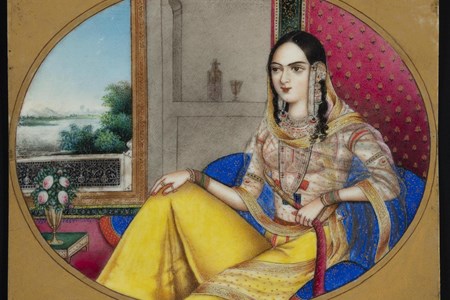
We are part of a community of institutions in Scotland undertaking research to explore imperial and colonial histories and legacies, including the topic of Scotland’s historic connections with the transatlantic slave trade.
In 2017, we were awarded a major grant by the Arts and Humanities Research Council (AHRC) (AH/P006752/1) to examine the material legacies of late 18th and 19th-century British military campaigns in United Kingdom military museum collections.
Baggage and Belonging: Military Collections and the British Empire is a collaborative research partnership with the National Army Museum which reappraises motivations for military colonial collecting.
In particular it investigates cultures of collecting within the British armed forces while on campaign and garrison duty in Africa and India, tracing collections and their histories through archival and material evidence.
Read about the project or buy the book.
Image above: Miniature portrait of Begum Sahiba Zeenat Mahal, wife of the last Mughal Emperor, taken by Surgeon Valentine McMaster, 78th Regiment, Indian Uprising, 1857-8.
Research into the provenance and nature of the Tibetan collections in Scottish museums was undertaken by Inbal Livne between 2009 and 2013 through a Collaborative Doctoral Award (CDA) funded by the Arts and Humanities Research Council. Titled ‘Tibetan Collections in Scottish Museums 1890-1930: A Critical Historiography of Missionary and Military Intent’, the project was a joint initiative between National Museums Scotland and the University of Stirling.
Using museum collections across Scotland and archives, the research revealed the colonial and imperial contexts of British-Tibetan encounters, and explored major sources of collecting, including military campaigns, colonial postings and missionary work.
The Matter of Slavery in Scotland was a collaborative project with the University of Edinburgh, supported by the Royal Society of Edinburgh, which explored ways of working with collections to integrate the history of slavery into museum displays and public history narratives.
The project considered historic and contemporary objects, together with buildings, monuments and paintings to identify and explore layered and often conflicting stories of Scotland’s slavery past. Leaping across time periods, the role of that past in shaping the country today was an important focus.
During 2018-19 workshops and events brought together university researchers, curators, teachers, and charities to examine objects from Scottish collections.
Image below: Crockery from the Empire Café, Glasgow 2014 Commonwealth Games cultural venue, featuring poetry about Scotland's slavery history.
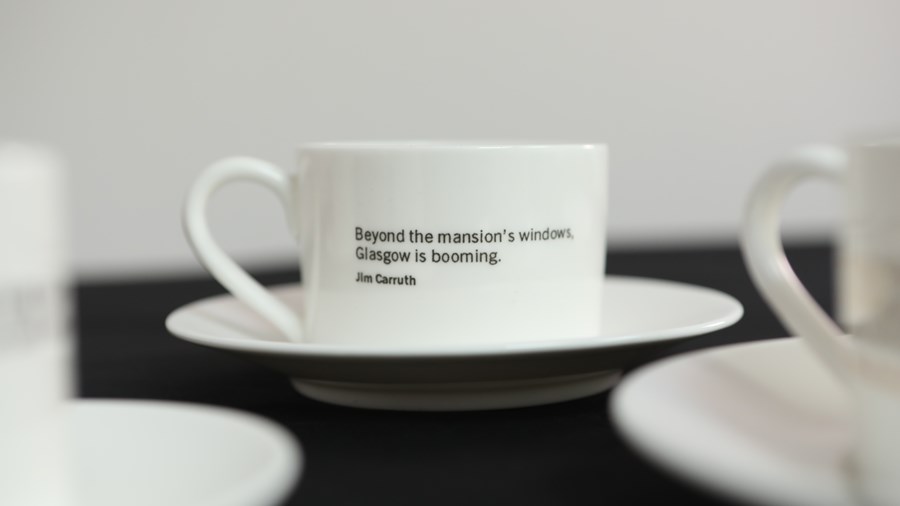
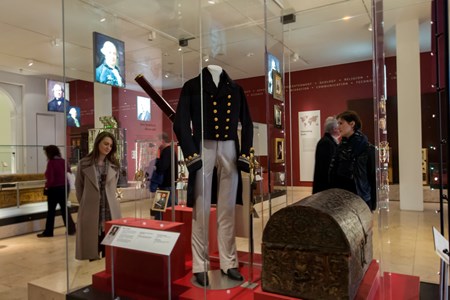
Across our museums, we are reflecting on how we represent imperial and colonial pasts to our audiences. In our galleries, we are making changes to displays and labels to address historical bias.
As part of this, our Collecting Stories Gallery has been reviewed and changes made to panels and interpretive text to better reflect how the objects displayed came into our museums, including as legacies of imperial and colonial history. We have also introduced new content bringing different perspectives and stories into the gallery with the involvement of communities of interest.
Other work in this area includes updated displays in the Scotland galleries and Grand Gallery. In Industry and Empire, an existing display on Scottish involvement in transatlantic slavery has recently been altered to include new material. In Scotland Transformed, a display on the tobacco trade now includes slavery-related objects and highlights the centrality of enslaved people and their labour to the Scottish economy during the 18th century. We have also recently revised the interpretation for the statue of James Watt in the Grand Gallery foregrounding his family’s involvement in the transatlantic slave trade alongside the more commonly known story of his contribution to the Industrial Revolution.
We invite you to comment on this and other aspects of our work by emailing input@nms.ac.uk.
Image above: the Discoveries Gallery, National Museum of Scotland.
Legacies of Empire examines the histories of objects brought back from colonial military service by the armed forces of the British Empire.
The exhibition explores the motivations, codes and conventions behind the acquisition of objects, and their museum afterlives, whether taken as loot and trophies, preserved as relics and memorials, received as diplomatic gifts, or collected privately by officers stationed overseas.
The exhibition was on at the National War Museum from 2020 to 2023 and was one of the outputs from the Baggage and Belonging research project.
Image below: Stone fragment taken at the British recapture of Khartoum, Sudan 1898, made into a memorial to General Gordon (courtesy of the Royal Engineers Museum).
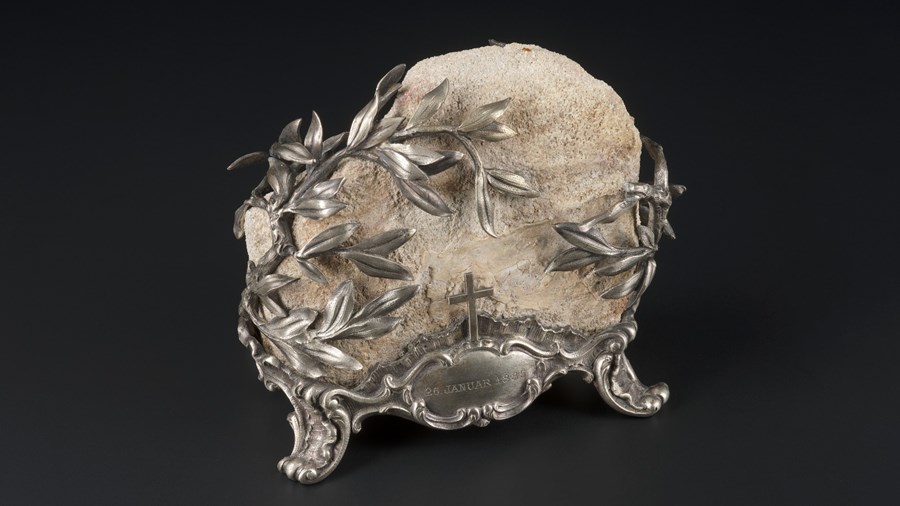
To tell new stories about Scotland's imperial and colonial histories and legacies, we continue to grow our collection. For example, we recently acquired two ivory plaques which were made to promote the anti-slavery campaign in Britain in the early-nineteenth century.
The plaques depict enslaved Africans kneeling in metal shackles and chains with slave ships at sail in the distance.
Each plaque is surmounted by a motto 'O LORD SET US FREE' and ‘THANK GOD FOR LIBERTY’.
Today, Scottish profit from, and participation in the transatlantic slave economy is increasingly understood and recognised alongside the history of Scottish involvement in the anti-slavery campaign.
The plaques are a reminder that slavery was contested in Britain at this time, as it also was in Africa and the Caribbean where many revolts against slavery took place.
We are continually reviewing the way that we store and publish our collections.
Since 2018 we have been conducting a review of the human remains in our collections. Many of these come from outside Europe and have come into the collection through imperial and colonial collecting.
We have been researching these remains to improve our understanding of their origins and collecting histories. To ensure that this information is available to all audiences, including descendant communities, we have published lists of all remains from outside Europe alongside our Human Remains in Collections Policy, which includes information about how to make requests for transfer of human remains.
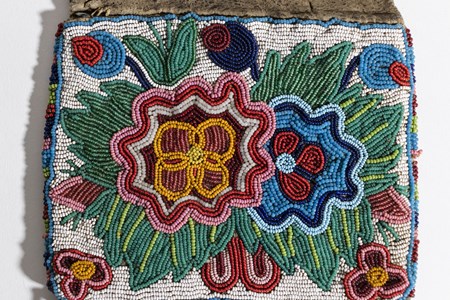
We partner with communities who have historical and contemporary connections with objects in our care to share and grow knowledge and provide greater access to collections and their associated information for all our audiences.
Since December 2020 we have partnered with the AHRC funded project 'Concepts Have Teeth, And Teeth That Bite Through Time: digital imaging and Blackfoot material culture in UK museums'. This project aims to connect Blackfoot people living in North America with their cultural heritage held by museums in the UK.
Directed by knowledge holders from Kainai, Piikani, Siksika, and Amskapipiikani nations, the project is a collaboration between Indigenous and non-Indigenous researchers, artists, archaeologists, museum professionals and students.
The project uses digital imaging techniques, art-based public engagement and spatial web technologies. These tools will improve the ability of Blackfoot people to interact with their historical objects and recover and shape their own narratives surrounding them. At National Museums Scotland the project is focusing on collections of Blackfoot quillwork.
The outputs include 3D digital models of museum objects, an online digital platform, an exhibition, and a publication on digital imaging in archaeology and cultural heritage.
Image above: Close up of a smoking bag showing floral designs in beadwork, Manitoba, Canada, c.1870.
National Museums Scotland is a partner on the Australian Research Council funded project 'Entangled Knowledges: Kaartdijin, Science and History in the Robert Neill collection' (2021-2024). The project aims to highlight Menang Nyungar knowledge embedded in a historical fish collection held at National Museums Scotland, returning this knowledge to the Menang community in Western Australia.
By working in a cross-sector, collaborative and Indigenous-governed team, the project will enrich and re-frame the understanding of this collection in the Museum. It will unearth Indigenous taxonomic practices, produce new histories of biocultural collections and develop a model for participatory cross-cultural collaborations.
In 1841, Scottish-born British Army officer Robert Neill made a collection of fish specimens, sketches and Menang objects that are now held at National Museums Scotland and the Natural History Museum. Workshops held on Indigenous land will produce content to bring the collection together digitally. This will be used by museum partners to ensure wide cross-sector and community engagement with the project outcomes.
The outputs will include an online digital platform to reassemble the collections, a public lecture and symposium, and a co-edited book.
Between January 2015 and April 2016 we worked in partnership with the Young Sikh Leaders Network at the Guru Granth Sahib Gurdwara in Glasgow. The project was supported by the National Lottery Heritage Young Roots Fund.
In this collaborative project, young Sikhs uncovered the historic and contemporary connections between Panjab and Scotland through the life of Maharaja Duleep Singh. The last ruler of Panjab, Maharaja Duleep Singh was deposed from the throne by the British and exiled to Great Britain in 1854.
Jewellery once belonging to Maharaja Duleep Singh, and now in the national collections, inspired the young people’s creativity. In their own films, stills photography and jewellery they expressed their values and views on the entangled Sikh-Scottish history.
We are supporting the delivery of a project led by Networking Key Services, an organisation who champion the inclusion of South Asian women and families living in Edinburgh.
This National Lottery Heritage Funded project aims to develop community understanding of the history, diversity and changing nature of religion in Scotland over the last 100 years.
South Asian women's groups have visited the museum to explore objects connected to Scottish belief and religion, researched a range of religious buildings in Edinburgh, and recorded their findings and processes through photography and film for an exhibition hosted at the Scottish Storytelling Centre in 2021. Other partners include the National Library of Scotland, the Scottish War Memorial and Media Education.
Since late 2019, we have partnered with the AHRC-funded project Egypt’s Dispersed Heritage, which explores the legacies of British archaeological practice in Egypt, including during the colonial period, and creates opportunities for dialogue around this history.
The project is sharing information about how artefacts were excavated and exported, as well as amplifying the voices of modern Egyptians through a programme of interventions co-designed and delivered with them. The project also hopes to transform awareness in the UK of modern Egyptian interest in its heritage.
Through this project, we have shared collections and collecting histories with contemporary Egyptian communities, using online engagement to foster dialogue. We have contributed to collaborations with Egyptian artists, whose creative outputs have transformed and re-Egyptianised narratives around these collections. Some of these are featured on our project webpage, which is also available in Egyptian Arabic.
In early 2020, we hosted a public event, ‘Egypt, Past and Present in Dialogue’, which is now available online as a podcast.
In February 1897, Britain undertook a punitive expedition against Benin, a kingdom located in what is now Nigeria. The invasion was presented as retaliation for the killing of British colonial officials who had entered the kingdom uninvited earlier that year.
British soldiers looted thousands of objects of immense cultural value from the royal city, many of which were sold to pay for the venture. Today, most of these objects are in European and American museums.
There are 74 objects in the collection of National Museums Scotland which are believed to be connected to the 1897 expedition.
As a member of the Benin Dialogue Group, we are committed to sharing information and knowledge and working towards a major reunion of the Benin works of art in Benin City. We are also working with the Digital Benin project to understand and share more about the provenance of the Benin objects in our care.
The Benin Dialogue Group is a collaborative working group that brings together museum directors and delegates from Austria, Germany, the Netherlands, Sweden, and the United Kingdom with representatives of the Edo State Government, the Royal Court of Benin, and the National Commission for Museums and Monuments, Nigeria.
We are collaborating with Lisa Williams, Director of the Edinburgh Caribbean Association and Honorary Fellow in the department of History, Classics and Archaeology at the University of Edinburgh to explore what museum collections reveal about Britain’s and Scotland’s role in the Transatlantic slave system and the experiences of enslaved people. Lisa offers her perspective on the stories of some of the objects in the collection in an article on Scotland and the Caribbean.
Image below: Money chest of the "Darien Company", the Company of Scotland Trading to Africa and the Indies, 1695. © National Museums Scotland
